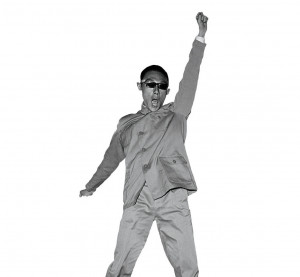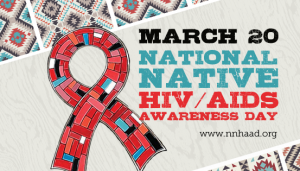AIDS is an everyday experience. The dates on this calendar all relate to the AIDS crisis. Some are globally known; others are drawn from personal experiences.
This online calendar is produced in partnership with Visual AIDS and is an extension of the exhibition “EVERYDAY,” which was curated by Jean Carlomusto, Alexandra Juhasz and Hugh Ryan in 2016. The exhibition and accompanying print calendar explored the AIDS crisis—historically and currently—through the lens of art and ephemera that examines and evidences daily experiences and practices in response to HIV/AIDS. Artists featured in the “EVERYDAY” exhibition were invited to submit as many dates to the calendar as they desired.
We invite you to reflect upon these dates, and this artwork, in dialogue with one another. We also encourage you to submit dates of your own by clicking here. Submissions may include the date of your diagnosis, the date of the loss of a loved one to AIDS-related illness or a significant milestone in your life with HIV/AIDS.
New submissions will be continually added to the calendar because AIDS is not over.
MARCH 1
Visual AIDS, an organization that supports HIV-positive artists, issues its first press release, announcing its formation and the proposal of its first project, Day Without Art. (1989)
Artist Hugh Steers dies of AIDS-related complications. (1995)
Artist Paul Chisolm is diagnosed HIV positive while in Switzerland. (2007)
MARCH 2

Istock
The Food and Drug Administration approves a screening test for HIV (known as ELISA) that detects antibodies to the virus. (1985)
MARCH 3
Ryan White, the HIV-positive teenager who became a national spokesperson for AIDS education, testifies before the President’s Commission on AIDS. (1988)
Scientists announce that an HIV-positive child appears to have been functionally cured of HIV (i.e., no detectable virus without antiretroviral therapy). Known as the “Mississippi Baby,” the child sees her virus rebound the next year, and she resumes HIV treatment. (2013)
MARCH 4
A political funeral procession for Aldyn McKean marches from 14th Street to Union Square Park. (1994)

Bob HattoyWikimedia
Bob Hattoy, an AIDS activist and former aide to President Bill Clinton who spoke at the 1992 Democratic National Convention, dies of AIDS-related complications. (2007)
U.N. Secretary-General Ban Ki-moon and former President Bill Clinton launch Massive Good, a fundraising initiative through which travelers can make a $2 donation toward global health causes, such as HIV/AIDS, malaria and tuberculosis, each time they purchase a plane ticket, book a hotel room or rent a car. It was discontinued the following year. (2010)
Results from the first phase of the PARTNER Study show that no person living with HIV who was taking antiretroviral therapy and had an undetectable viral load transmitted HIV to a partner. (2014)
At the 2019 Conference on Retroviruses and Opportunistic Infections, researchers announce that the London Patient is the second person to be cured of HIV after receiving a bone marrow transplant from a donor who is genetically immune to the virus. (2019)
MARCH 5
MARCH 6
ACT UP New York’s Needle Exchange Committee is formed. (1990)
MARCH 7
MARCH 8
Eagle Scout Henry Nicols, age 17, goes public with his HIV status at a press conference in Cooperstown, New York, and becomes the first student to disclose his status. (1991)

Sex Positive, a film about AIDS activist Richard Berkowitz, premieres at the South by Southwest Film Festival. (2008)
The Centers for Disease Control and Prevention launches “Take Charge. Take the Test,” a testing and awareness campaign focused on Black women. (2012)
MARCH 9

Courtesy of HBO/ © Robert Mapplethorpe Foundation
Photographer Robert Mapplethorpe dies of AIDS-related complications. (1989)
MARCH 10

National Women and Girls HIV/AIDS Awareness Day
Larry Kramer speaks at The LGBT Community Center in New York City and calls upon those gathered to mobilize and demand an effective AIDS policy response. (1987)

Tseng Kwong Chi
Photographer Tseng Kwong Chi dies of AIDS-related complications. (1990)
The film Life Support, which features Oscar-nominated actress and rapper Queen Latifah as an HIV-positive mother and peer counselor working at an AIDS organization in Brooklyn, premieres on HBO. (2007)
A coalition of AIDS service organizations, reproductive rights advocates and sexual health pioneers launch the Chicago Female Condom Campaign’s Put a Ring on It! initiative to build public support for the second-generation female condom, the FC2, which was approved in 2009. (2010)
MARCH 11
In order to educate others about HIV activist Alison Gertz goes public in The New York Times with her story about how she contracted the virus. A TV movie based on her life, starring Molly Ringwald, aired on ABC in March 1992. (1989)
MARCH 12
The AIDS Coalition to Unleash Power (ACT UP) is formed when approximately 300 people gather two days after Larry Kramer’s call to unite in anger and commit to nonviolent direct action to end the AIDS crisis. (1987)
MARCH 13
FDA approves Crixivan (indinavir sulfate). (1996)
Eighty people living with HIV pose naked for the May cover of POZ, marking the 10th anniversary of the magazine’s publication. (2004)
Justin B. Terry-Smith publishes I Have a Secret, an HIV-themed children’s book. (2011)
MARCH 14
The Food and Drug Administration (FDA) announces the approval of the first antigen test kit to screen blood donors for HIV. (1996)
The Centers for Disease Control and Prevention launches “Take Charge. Take the Test,” a social media campaign aimed at increasing HIV testing and awareness among Black women. (2012)
MARCH 15

Mark S. KingCourtesy of Mark S. King
Writer and activist Mark S. King tests HIV positive. (1985)
MARCH 16
MARCH 17
That’s What Friends Are For: Arista’s 15th Anniversary Concert is held at Radio City Music Hall in New York City. The event raises more than $2.5 million for various AIDS organizations. (1990)
Jermaine Stewart, an American R&B singer best known for his 1986 hit single "We Don’t Have to Take Our Clothes Off," dies of AIDS-related liver cancer. (1997)
MARCH 18
William F. Buckley, Jr. pens New York Times op-ed suggesting that people with AIDS should be tattooed. (1986)
William Olander, New Museum curator/ co-founder of Visual AIDS, dies of AIDS-related complications. (1989)
The largest-ever clinical trial for a therapeutic AIDS vaccine begins at Graduate Hospital in Philadelphia. (1996)

BroadwayBears.com
Broadway Cares/Equity Fights AIDS holds its final edition of The Broadway Bears, an auction of one-of-a-kind teddy bears costumed as characters from Broadway’s biggest hits. (2012)
MARCH 19
The U.S. Food and Drug Administration (FDA) approves the first antiretroviral drug for HIV—zidovudine, better known as AZT. The drug was initially developed to treat cancer. (1987)
My Brother’s Keeper, a film about identical twin brothers (played by John Lithgow) who sue an insurance company to pay for a possible lifesaving bone marrow transplant for one of the brothers, who is living with HIV, premieres. (1995)

“Breaking the Surface: The Greg Louganis Story”
Breaking the Surface: The Greg Louganis Story, based on the Olympic diver’s best-selling book and starring Mario Lopez, airs on television. (1997)
MARCH 20

National Native HIV/AIDS Awareness Day
National Native HIV/AIDS Awareness Day
MARCH 21
Members of ACT UP affinity group Action Tours hang a banner on New York’s City Hall reading “AIDS Hall of Shame.” (1994)
Tom Hanks wins the Academy Award for Best Actor for the film Philadelphia, in which he plays a lawyer living with HIV who sues his employer after being wrongfully dismissed. (1994)
MARCH 22
MARCH 23
President Obama signs the Patient Protection and Affordable Care Act, also known as Obamacare. The health care law expands access to care and prevention for all Americans and also offers protections for those living with HIV and other preexisting conditions. (2010)

Elizabeth Taylor receives the Jean Hersholt Humanitarian Award at the 1993 Academy AwardsYouTube/Oscars
Actress and longtime AIDS activist Elizabeth Taylor dies. (2011)
Karl Schmid, a 37-year-old Australian-born television entertainment reporter, reveals on Facebook that he’s been living with HIV for more than 10 years. (2018)
Patrick O’Connell, the founding director of Visual AIDS, dies of AIDS-related causes. (2021)
MARCH 24
The first ACT UP action takes place on Wall Street to protest AZT’s $10,000-per-year price tag and to demand access to experimental drugs and an end to discrimination against people with AIDS. (1987)

Douglas Brooks is appointed as the new director of the White House Office of National AIDS Policy. He is the first African American and the first person living with HIV to hold the position. (2014)
The HIV Justice Worldwide coalition, which campaigns to end HIV criminalization around the world, launches in Brighton, England. (2016)
MARCH 25
Nick News with Linda Ellerbee airs “A Conversation with Magic” on Nickelodeon. The special episode features Magic Johnson discussing HIV and AIDS with children, including a young Hydeia Broadbent. (1992)
Surgeons at Johns Hopkins Medical Center in Baltimore perform the first living donor HIV-to-HIV kidney transplant in the United States. (2019)
MARCH 26
AIDS activists protest the New York State AIDS Advisory Council’s HIV Surveillance Work Group’s proposal to create a list of people who are HIV-positive. (1998)
The FDA approves the use of oral fluid samples with a rapid HIV diagnostic test kit that provides test results in as little as 20 minutes. (2004)
MARCH 27
The U.S. Department of Health and Human Services issues new HIV treatment guidelines recommending treatment for all adults and adolescents living with HIV, regardless of CD4 count or viral load. (2012)
MARCH 28
ACT UP demands benefits and housing for People with AIDS in the Target City Hall action. (1989)
MARCH 29
President Ronald Reagan and French Prime Minister Jacques Chirac end an international scientific dispute when they announce that researchers from the United States and France will share credit for the discovery of the AIDS virus. (1987)
The television film Something to Live For: The Alison Gertz Story starring Molly Ringwald airs on ABC. (1992)
The FDA asks condom manufacturers to begin using the air-burst test on all brands of latex condoms. The new test measures a condom’s strength and may be an indirect indicator of its resistance to breakage during use. (1994)
MARCH 30
Visual AIDS presents its inaugural exhibition The First Ten at PS122. (1995)
Supreme Court hears Bragdon v. Abbott, in which a dentist refused to treat Sidney Abbott, who was HIV positive. The court rules in favor of Abbott, arguing that HIV is a condition covered under the Americans with Disabilities Act. (1998)
MARCH 31
Sight of Construction exhibition presented by Visual AIDS opens at The LGBT Center. (2001)
The Bill & Melinda Gates Foundation awards a $60 million grant to the International Partnership for Microbicides to support the research and development of microbicides to prevent transmission of HIV. (2003)
About the Artwork

Eva Hayward, I Am Sick, 2010, Digital print of 16mm hand-painted film, ink, gel medium
Illness alters the senses. Vision is viscous, as if light is a stinging syrup. You want to rub it out, but you only rub it. Eyes rubbed red and watery.
— Eva Hayward

Founded in 1988, Visual AIDS is the only contemporary arts organization fully committed to raising AIDS awareness and creating dialogue around HIV issues today, by producing and presenting visual art projects, exhibitions, public forums and publications—while assisting artists living with HIV/AIDS. Visual AIDS is committed to preserving and honoring the work of artists with HIV/AIDS and the artistic contributions of the AIDS movement.







2 Comments
2 Comments